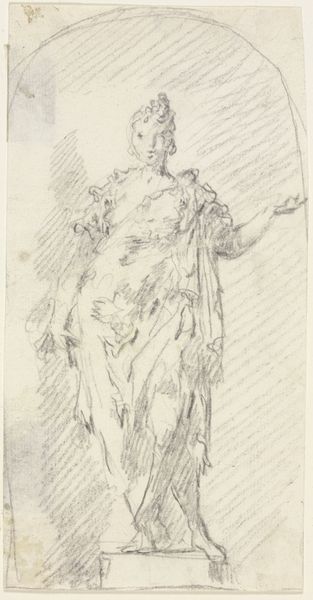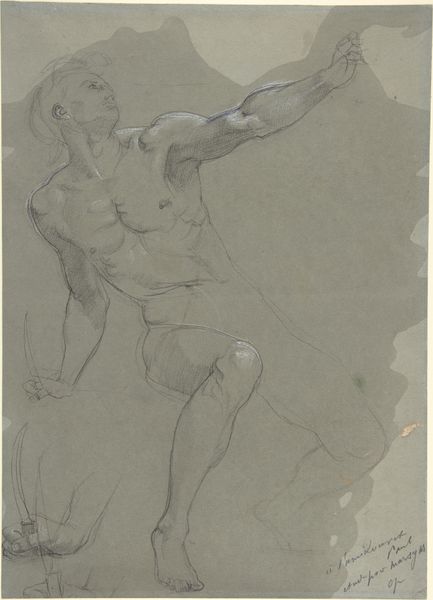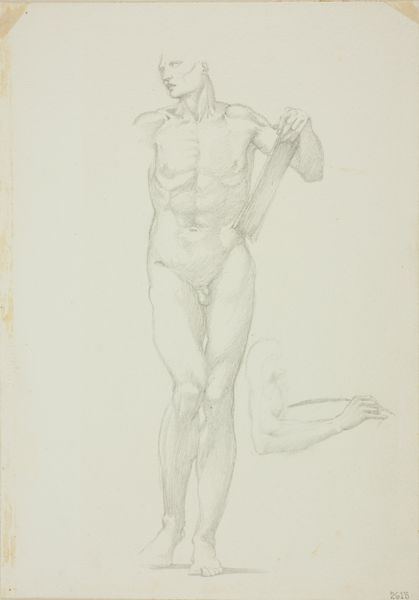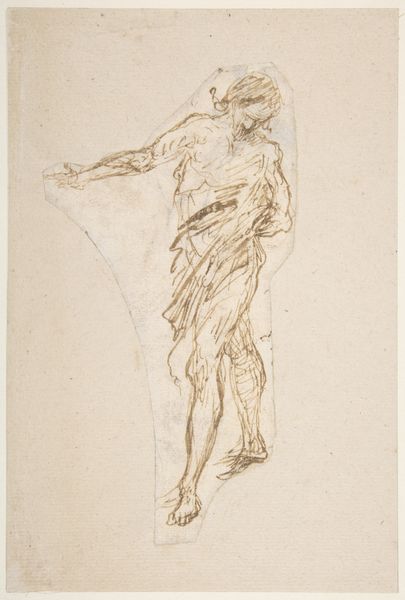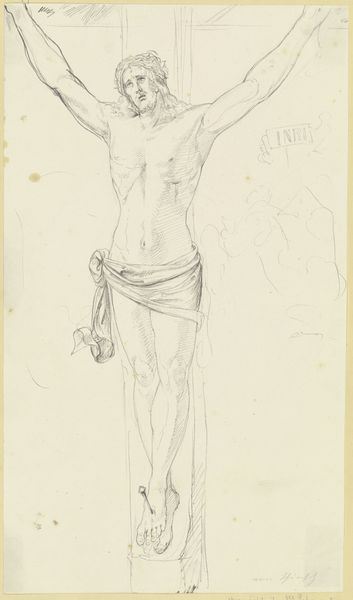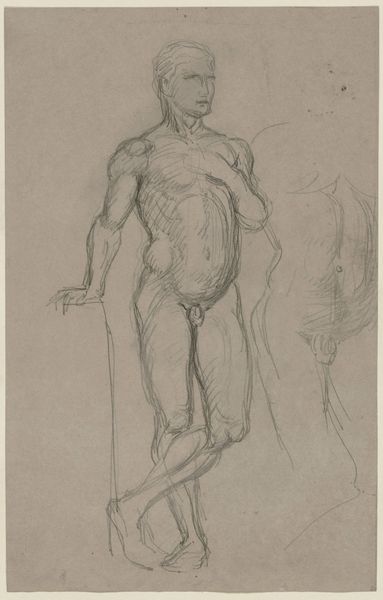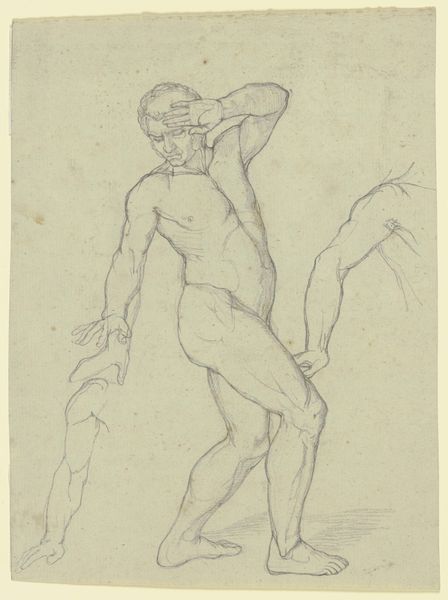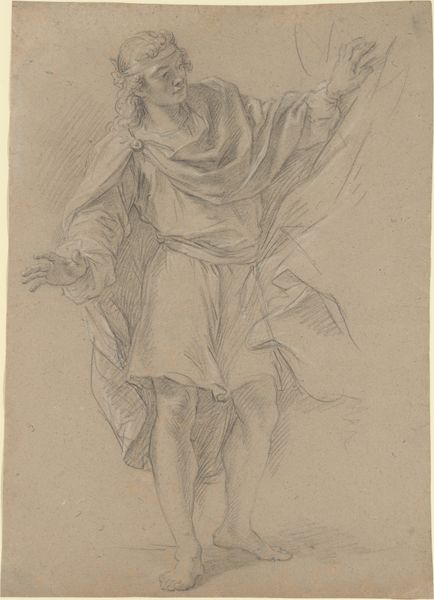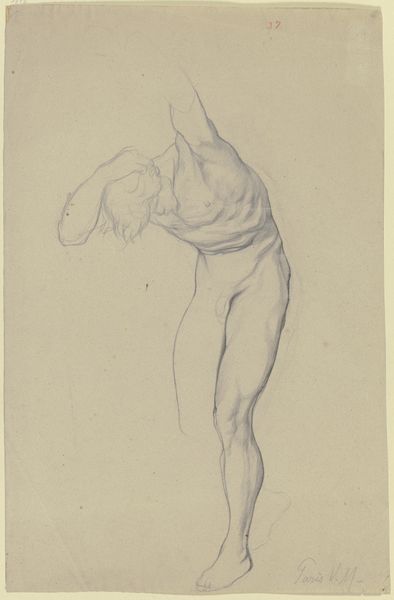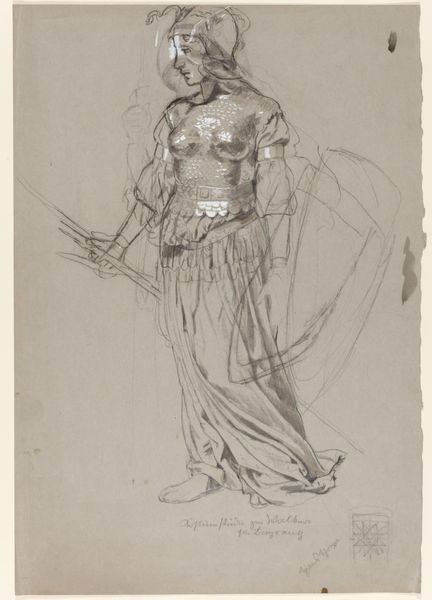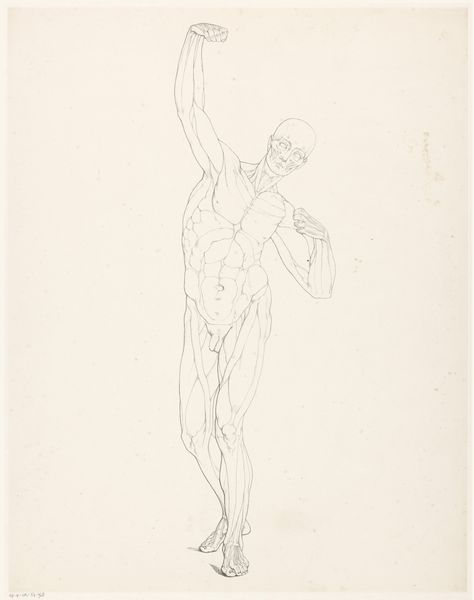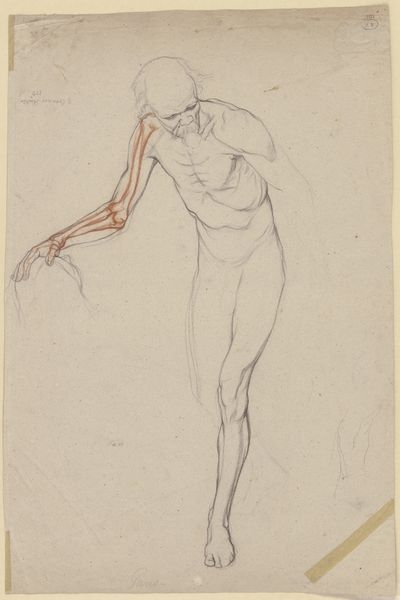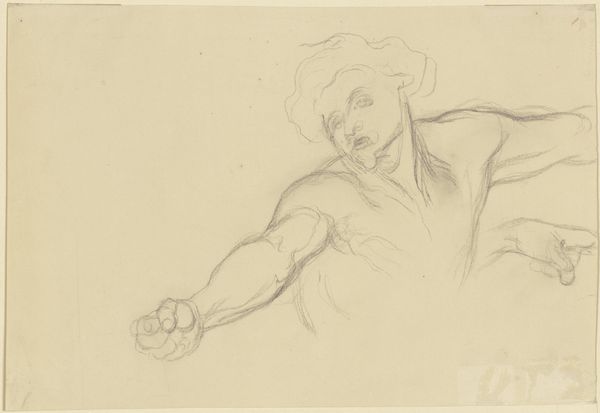
drawing, paper, pencil, chalk
#
drawing
#
neoclacissism
#
classical-realism
#
figuration
#
paper
#
form
#
pencil
#
chalk
#
15_18th-century
#
line
#
history-painting
#
academic-art
#
nude
Copyright: Public Domain
Curator: Here we have Heinrich Friedrich Füger’s drawing, “Decimus from The Death of Virginia,” created around 1800. It's rendered in pencil and chalk on paper, and currently resides here at the Städel Museum. Editor: My initial impression is one of dramatic tension, heightened by the starkness of the lines against the subdued ground. He seems to be making some sort of intense accusation, pointing forcefully into the distance. Curator: Füger was deeply invested in Neoclassicism, so naturally he turned to history for grand narratives that could serve as moral instruction. "The Death of Virginia" is just such a story. It depicts a Roman tragedy where a father chooses to kill his daughter to save her from enslavement by a corrupt official. Editor: And Decimus is...? The figure has all the classical signifiers, draped cloth, noble bearing, yet something in his upward thrust seems less about heroism and more about anger—perhaps the symbolic representation of outraged virtue? The visual language reminds us that virtue has long been portrayed through exaggerated displays of emotional rhetoric, intended to evoke action and judgment. Curator: Absolutely. We have to consider the work in the political context of its time. Remember, this was around the time of the French Revolution. This historical subject of Roman virtue was also intended as a pointed critique of contemporary power structures. Füger subtly encourages viewers to align themselves with resistance against tyranny and it allows an exploration into contemporary social justice movements against exploitation and domination. Editor: That makes his gesture more compelling. It's not just rage, but an embodied accusation leveled against unjust authority. This frozen moment in a larger narrative resonates, tapping into a shared reservoir of visual memory depicting moments of historical uprising, and legal dispute, holding echoes across centuries of cultural consciousness. I wonder what future audiences will decode in that forceful accusation? Curator: That's what makes it so compelling. It serves both as a period piece firmly rooted in its specific historical context, and an enduring exploration of justice, gender and resistance. Editor: A powerful piece. The layers of meaning really give you something to consider about image and enduring societal injustice.
Comments
No comments
Be the first to comment and join the conversation on the ultimate creative platform.
